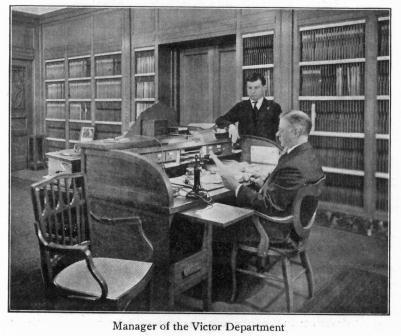By Anna J. Clutterbuck-Cook, Reader Services
A couple of weeks ago, my wife and I moved across town from one former streetcar suburb-turned-neighborhood of Boston (Allston/Brighton) to another (Jamaica Plain). A paltry three mile journey as the crow flies, since we live without a car and get around on foot, public transit, or bicycle, this has meant learning new pathways to all of our usual destinations — including the Massachusetts Historical Society. Along these new routes stand traces of Boston’s past, if only you keep your eyes open and know where to look for them.
Bicycling home from work along the Southwest Corridor Park, from Symphony Hall to Jackson Square, last week I happened to notice the brick facade of an old factory building turned residential lofts that announced in the stonework “Oliver Ditson Co.”

Who, I wondered, was Oliver Ditson, and what had his factory once produced? Fresh from reading Alexander von Hoffman’s history of Jamaica Plain, Local Attachments: The Making of an American Urban Neighborhood, 1850 to 1920 (Johns Hopkins University Press, 1994), I knew the Heath Street area had been known for its breweries. Perhaps, I thought, our Mr. Ditson was a brewer. Happily, I work at a place where such questions can often be answered by searching our catalog and going on a historical treasure hunt! A few keystrokes and call slips later, I had discovered that Oliver Ditson and his company were not brewers but, instead, music publishers and retailers here in Boston. Ditson, born in Boston in 1811, began his career working at a bookshop on Washington Street, under the employ of Samuel H. Parker, before launching into the music publishing business in 1835. In 1858 Oliver Ditson & Co. began publishing Dwight’s Journal of Music, one of the most highly respected music journals of the nineteenth century, and was soon expanding into the Cincinnati, Chicago, Philadelphia, and New York markets.
In 1918 a history of the music scene in Boston, published by the Oliver Ditson Company, foregrounded the company’s sparkling new ten-story retail building that still stands today on the corner of Tremont and Boylston Streets, overlooking the Boston Common. “The focus on modern Boston’s shopping activity is at the corner of Tremont and Boylston Streets, where converge the currents of vivid life from hotels, theatres, and subways,” writes William Fisher in Notes on Music in Old Boston. “Within a stone’s throw of this teeming corner … is the splendid new home of the Oliver Ditson Company” (79). From its state-of-the-art heating plant in the sub-basement to its Tiffany show windows, “Victor Talking Machines” department,” and opulent meeting rooms, the Tremont Street headquarters was the company’s public face.


The building that would become Oliver Lofts in 2011 meanwhile, was a late arrival into the company’s holdings. The property did, indeed, begin life as a brewery — though unassociated with Ditson. According to Historic Boston, the Highland Spring Brewery occupied the site until Prohibition brought the American beer industry to its knees. The Oliver Ditson Company then purchased the storehouse, built in 1912 and once used to house casks of ale and porter, and used the building as a print shop and warehouse into the mid-twentieth century.
Thus, one single rehabilitated industrial building I pass by on my evening commute holds within its walls traces of two centuries worth of Boston development.

